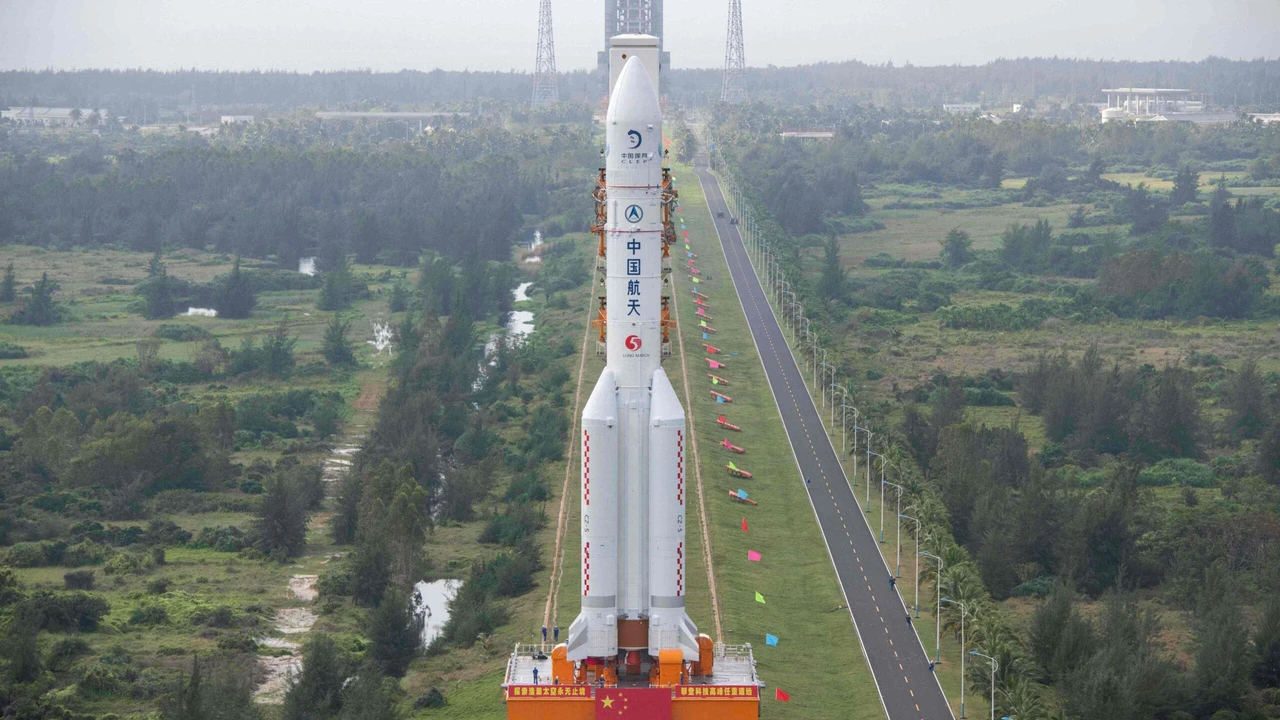Chinese moon probe uncovers water in lunar soil samples
 The Long March 5 rocket, which launched China’s Chang’e-5 lunar probe, being transported to the launching area in Hainan province. (AFP Photo)
The Long March 5 rocket, which launched China’s Chang’e-5 lunar probe, being transported to the launching area in Hainan province. (AFP Photo)
Chinese scientists have discovered a mineral “enriched” with water in lunar soil samples returned from the Moon by the Chang’e 5 mission.
This discovery reveals the presence of trace water from a “much higher latitude” than any previous missions.
This groundbreaking discovery could power future missions to the Moon amid an ongoing “space race” between the U.S. and China.
Findings published in nature astronomy
Researchers from the Chinese Academy of Sciences published their findings in the journal Nature Astronomy. They found that “water molecules can persist in sunlit areas of the Moon as hydrated salts.”
This research offers new insights into Moon water’s chemical and physical forms, which could shape how minerals are extracted for rocket fuel on the lunar surface.
While samples brought back by Apollo astronauts decades ago suggested the Moon was likely completely dry, recent discoveries indicate the Earth’s closest neighbor has water reservoirs.
For instance, India’s Chandrayaan-1 mission 2009 detected signs of hydrated minerals on the Moon in the form of oxygen and hydrogen molecules.
In 2020, NASA announced the discovery of water on the Moon’s sunlit surface, followed by China’s Chang’e 5 lunar lander providing the first on-site evidence of lunar water.
The latest study of samples collected during the Chang’e 5 mission identified an unidentified mineral crystal, dubbed “unknown lunar mineral (ULM-1),” to be rich in water and ammonia molecules.
“Our findings suggest that water molecules can persist in sunlit areas of the Moon as hydrated salts,” the scientists wrote, noting that over 40% of the mineral sample by mass is made up of water molecules.
They also ruled out the possibility of contamination by rocket exhaust based on the sample’s chemical and isotopic compositions and formation conditions.
Significance for future lunar missions
More evidence of water on the Moon may follow with the recent return of China’s Chang’e 6 probe, which brought back the first samples from the lunar far side.
China has intensified its space program over the last decade, closely competing with the US in what NASA Administrator Bill Nelson calls a new “space race.” The country plans to send a crewed mission to the Moon by 2030 to build a lunar base.



